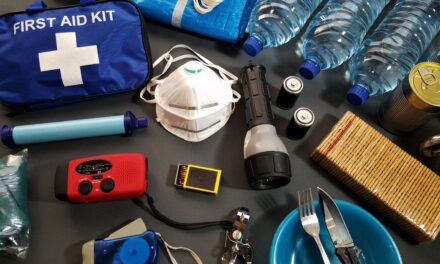Introduction
As the rain beats against your window, you might find comfort in the rhythmic sound or the cool breeze it brings. But for many urban dwellers, this scenario can quickly escalate into a nightmare: Floods. In recent years, urban flooding has emerged as a pressing concern across the globe. It’s not just about waterlogged streets; it’s about the safety, resources, and resilience of communities facing these rising tides. As city populations grow and climate patterns shift, understanding and preparing for urban floods has become more crucial than ever.
Floods in urban areas are a unique beast. Unlike their rural counterparts, where water might have more places to disperse, cities with their concrete landscapes and dense populations face significant challenges. This article isn’t about fear-mongering; it’s about empowerment. It’s about understanding the risks and arming yourself with knowledge and tools to safeguard your family and community against urban flooding.
Whether you’re a long-time city resident or new to urban living, this guide aims to navigate you through the essentials of urban flood preparedness. From understanding the nature of urban floods to practical steps for preparing your home and family, we’ve got you covered. So, let’s dive in and explore how you can stay afloat when the waters rise.
Why focus on urban areas, you might ask? The answer lies in the unique challenges posed by city environments. The high concentration of buildings and paved surfaces in urban areas prevents water from being absorbed into the ground, leading to more severe and rapid flooding. Add to that the complex infrastructure and densely packed populations, and you have a recipe for potential disaster. Understanding these dynamics is the first step in effective preparation.
But it’s not all doom and gloom. Cities also possess remarkable resilience and resources. By tapping into these and coupling them with informed strategies, urban residents can not only survive but thrive in the face of flooding. So let’s embark on this journey of preparedness together, equipping ourselves with the knowledge and skills to tackle urban floods head-on.
Understanding and Preparing for Urban Floods
Urban flooding is a complex phenomenon influenced by various factors, including geographical location, city planning, and climate change. The increasing frequency of extreme weather events has amplified the risk of floods in many urban areas. To prepare effectively, understanding these factors and their impact on your locale is essential.
1. Know Your Risk: Start by assessing your city’s flood risk. Many urban areas are situated near water bodies or have developed over natural flood plains. Local government websites or environmental agencies often provide flood maps and historical data. Understanding whether you reside in a flood-prone zone can guide your preparation efforts.
2. Urban Infrastructure and Its Role: The design of a city’s infrastructure significantly impacts its flood resilience. Stormwater systems, for instance, play a crucial role in managing heavy rainfall. However, outdated or poorly maintained systems can lead to water backing up into streets and homes. Familiarize yourself with your city’s infrastructure and any ongoing improvements or challenges.
3. Climate Change and Weather Patterns: Climate change has led to more erratic and severe weather patterns, contributing to an increase in urban flooding. Pay attention to local weather forecasts and sign up for alerts from meteorological services. This knowledge can be pivotal in anticipating and preparing for flood events.
4. Personal Preparedness: Beyond understanding external factors, personal preparedness is vital. This includes creating a family emergency plan, assembling an emergency kit, and understanding evacuation routes and shelters in your area. Ensure that all family members are aware of the plan and know what to do in case of a flood.
5. Home Protection Strategies: If you live in a flood-prone area, consider home modifications to reduce flood damage. This can include installing flood barriers, using flood-resistant materials for lower levels, and ensuring proper sealing of basements. Simple actions like raising electrical outlets and appliances can also make a significant difference.
6. Community Engagement: Engaging with your community can enhance preparedness. Join or initiate local groups focused on disaster preparedness. Such groups can share resources, knowledge, and support during emergencies. Collaborating with neighbors can lead to more comprehensive and effective preparation strategies.
Preparation for urban flooding is not a one-time effort but an ongoing process. Regularly review and update your plans and kits. Stay informed about new developments in your city’s flood management and adjust your strategies accordingly. Remember, preparation is not just about surviving a flood; it’s about minimizing its impact on your life and property.
Summary and Key Takeaways: Staying Safe During Urban Floods
In summary, urban floods present a unique set of challenges that require a combination of personal, community, and infrastructural preparedness. Here are the key takeaways from this article:
- Understand Your Risk: Knowledge of your local area’s flood risk is the first step in preparation. Use resources available through local authorities or environmental agencies to assess whether you live in a high-risk zone.
- Infrastructure Awareness: Stay informed about the state and efficacy of your city’s stormwater systems and other infrastructure relevant to flood management.
- Stay Informed about Weather: Regularly monitor weather forecasts and sign up for local alerts to stay ahead of potential flood events.
- Personal Preparedness: Develop a comprehensive family emergency plan, build an emergency kit, and be aware of evacuation routes and local shelters.
- Protect Your Home: Implement flood-proofing measures in your home, especially if you live in a flood-prone area. These can range from structural modifications to simple preventative steps.
- Community Engagement: Actively participate in or form community groups focused on disaster preparedness. Collective effort can lead to better preparedness and response.
- Regular Updates and Practice: Keep your plans and kits up-to-date and practice your emergency plan with family members to ensure everyone knows what to do in case of a flood.
In conclusion, urban flooding is a growing concern in many areas due to various factors, including climate change and urban development. Effective preparedness involves understanding the specific risks associated with your locale, staying informed, and being proactive in both personal and community preparedness efforts. By following these guidelines, you can significantly reduce the impact of floods and safeguard yourself, your family, and your property.








